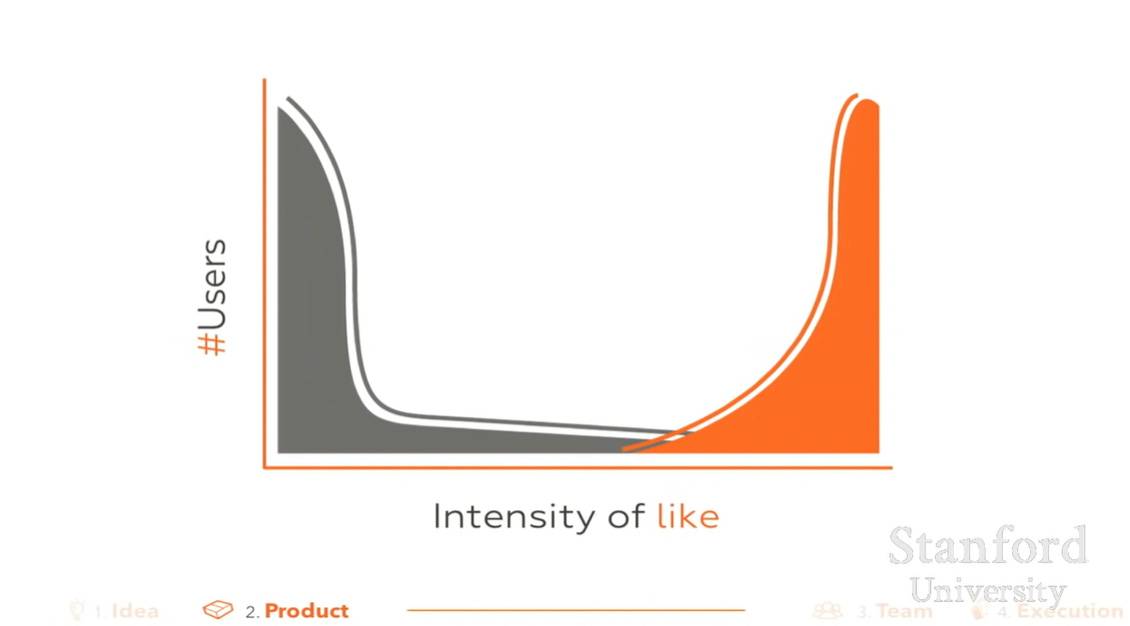What is the purpose of a product manager?
Or better rephrased as what is the point of product?
When I first considered a career as a product manager (PM) in tech, I found answers to basic questions such as “what is product management?”, “what do PMs do?”, and “what’s their role?” unfulfilling.
The reason was because the questions and answers focus on the what such as the responsibilities of PMs, the process they employ, and even the requirements of what good PMs look like. However, I never got a clear, succinct answer on the why: “What is the purpose of a PM?”
I googled “What is the purpose of a product manager?” and I’ve pasted verbatim answers from websites. Note, even a Google search takes a “why” question and serves up answers to “what” questions.
From Atlassian on “What is a product manager?”:
A product manager is the person who identifies the customer need and the larger business objectives that a product or feature will fulfill, articulates what success looks like for a product, and rallies a team to turn that vision into a reality.
From Coursera on “What Does a Product Manager Do?”:
A product manager focuses on product strategy to create, distribute, sell, and obtain feedback on a specific product or service.
From Aha! on “What is the role of a product manager?”:
Product managers guide the success of a product and lead the cross-functional team that is responsible for continuously improving it... You provide the expertise needed to lead and make strategic product decisions — aligning engineering, marketing, sales, and support around the work that will bring the most value to customers.
From Heap.io on “What does a Product Manager *Really* Do?”:
Product Managers guide the development of a company’s product or feature, and serve as liaison between business, technology, and design teams. They lead cross-functional initiatives and manage tasks, tools, relationships in every phase of development, from product planning through launch and beyond.
From Product School on “What is a Product Manager?”:
Product Managers guide the success of a product by leading a cross-functional team, defining product vision, planning its roadmap, and working with stakeholders to deliver value to customers. Their guiding mission is to give customers an excellent product experience.
In many ways, a Product Manager’s role can be likened to that of an orchestra conductor. Product Managers work with different teams and key players to help everyone bring their unique skills together to create an amazing experience for the audience. In order to do this, a Product Manager’s role is multifaceted and includes a wide range of responsibilities.
From the Harvard Business Review (HBR) article “What It Takes to Become a Great Product Manager” by Julia Austin:
Because I teach a course on product management at Harvard Business School, I am routinely asked, “What is the role of a product manager?” The role of product manager (PM) is often referred to as the “CEO of the product.” I disagree…
PMs are not the CEO of product, and their roles vary widely depending on a number of factors. So, what should you consider if you’re thinking of pursuing a PM role?
Aspiring PMs should consider three primary factors when evaluating a role: core competencies, emotional intelligence (EQ), and company fit.
I’m serious, the HBR article doesn’t answer its own question posed in the first sentence. I don’t know about you, but “their roles vary widely depending on a number of factors” doesn’t sound like a definitive or fulfilling answer to me.
Here is my answer in one line:
A product manager delivers products customers love.
Let’s dive into first principles.
What is a customer?
The user of a product who pays for it.
What is a product?
A solution to a customer need.
A product delivers economic utility to a customer by solving a need, and the customer monetarily compensates the owner of the product (i.e., a company) for the value delivered. Therefore, by definition a product must solve customer needs and generate economic returns for the company. I posit that focusing on the first tends to maximize the second.
Sam Altman, CEO of OpenAI and then president of Y Combinator, taught a whole course at Stanford on how to start a startup. I like his definition of product, which I believe encompasses what’s better known as the customer experience:
Anything involved in your customer’s interaction with what you build for them. It includes customer support and copyright explaining the product.
Therefore, the PM delivers not just the product, but the entire customer experience.
Consider a Coke can. The Coca Cola Company makes the product which is the drink packaged in a Coke can. I, as a customer, pay for it because it will satiate my desire for a sweet, fizzy, and slightly acidic beverage. Is my experience as a customer limited to the Coke can and its contents? No, it’s also how the can pops when I open it, the carbonated bubbles, the taste, the after taste, and even how I obtained the beverage in the first place. It’s also the marketing that subtly planted the idea of “Coke”.
What does deliver mean?
Anything and everything to get the product into the hands of customers. If it affects the customer experience, the PM is responsible.
When I say deliver, isn’t this just the process of talking with customers, being a “voice of the customer”, defining the vision and product requirements, working with engineers and UX to build it, then launching the product?
Yes, but there is more. PMs can also code, market, project manage, and do whatever else it takes to deliver products that customers love.
HBR was right that “PMs are not the CEO of the product”. PMs are more like early stage founders. The founders of a startup must wear the PM hat a significant chunk of the time. Like founders, PMs must create something from nothing. To build and ship a product that customers will love, no task is too small or too sacred.
For example, Elon Musk works next to frontline workers, sleeps on the floor of his factories, and moved Twitter / X servers out of Sacramento himself. But that’s Musk you say, and he’s another level of intensity! When Google launched Gemini last month on November 6, co-founder Sergey Brin was listed not as a lead but as a core contributor; not just contributing as a manager but as a coder.
PMs do what it takes to deliver products customers love.
What does love mean?
It can be defined as “unselfish loyal and benevolent concern for the good of another”, but I think in practice is it’s an application of the golden rule: “serve your customer the way they want to be served”. Or as Charlie Munger would put it: “Don’t sell anything you wouldn’t buy yourself.”
Customers direct their love towards the entire customer experience.
Isn’t customer love vague? No, if you talk to your customers, you’ll have a sense of what customers will love and will think is “meh”. If you really want a metric, then Net Promoter Score, developed by Bain & Company, is probably the best measurement of customer love of a product.
Altman talks about the bare product requirements to launch a successful startup in his lecture on How to Startup a Startup:
Your job is to build something that users love… A lot of good-on-paper startups fail because they merely make something that people like. It’s better to build something a small number of users love than a large number of users like…
If you get this right, you can get a lot of other things wrong. If you don’t get this right, you can get everything else right and you’ll probably still fail.
In the following chart, Altman quips that the total amount of love for a given product is the same, but it’s how it’s distributed that counts. Don’t be in the grey, be in the orange.
Source: Lecture 1- How to Start a Startup (Sam Altman, Dustin Moskovitz)
For more, Altman talks at length with Reid Hoffman, co-founder of LinkedIn, on why Customer love is all you need.
Still don’t believe me?
How do Amazon, Apple, and Google start building products that customers love?
Building products that customers love is so important that Apple, Amazon, and Google have all prominently cited starting from the customer or user experience.
Let’s start with Apple and Steve Jobs. Have you seen this video back from 1997?
Here is the key piece quoted from Jobs:
One of the things I’ve always found is that you’ve got to start with the customer experience and work backwards to the technology. You can’t start with the technology and try to figure out where you’re gonna try to sell it.
Now, let’s take a look at Amazon. Out of all Amazon’s Leadership Principles, customer obsession is first:
Leaders start with the customer and work backwards. They work vigorously to earn and keep customer trust. Although leaders pay attention to competitors, they obsess over customers.
In fact, Amazonians start the process of building products by first writing a proposed press release (PR) that outlines the customer experience and benefits. In addition, there are answers to a set of frequently asked questions (FAQ) — this is collectively known as the PR/FAQ. This was formalized in 2004 as the Working Backwards process.
How about Google? Google has “Ten things we know to be true” in which the first thing is:
1. Focus on the user and all else will follow. Since the beginning, we’ve focused on providing the best user experience possible… And when we build new tools and applications, we believe they should work so well you don’t have to consider how they might have been designed differently.
Whether you are in a pre-product startup or in the largest tech company in the world, start with the customer to build products customers love. That is the point of product and the purpose of product managers.
I’ll dive into solving for customer needs, technical innovations, MLP, and luxury products to clarify what it means to build products customers love.



